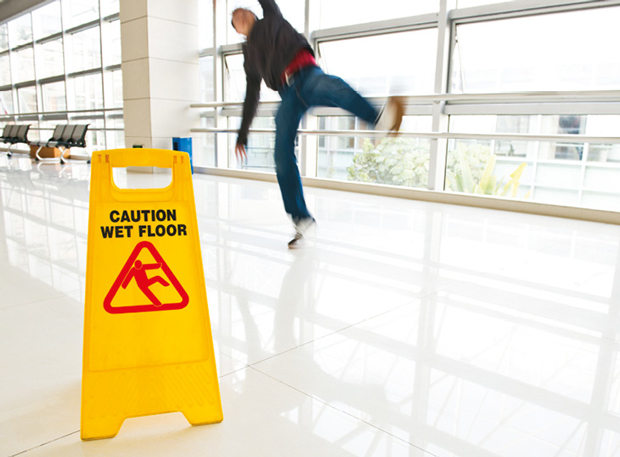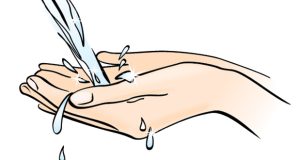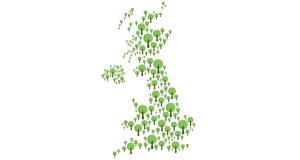 Scott Saunders, Technical Service Manager at Watco, discusses why a proactive approach to maintenance and repairs can help FMs create safer working environments in the winter months
Scott Saunders, Technical Service Manager at Watco, discusses why a proactive approach to maintenance and repairs can help FMs create safer working environments in the winter months
Keeping a well-maintained building plays a large role in creating a safer facility. Yet recent research from Watco revealed that almost a third of facilities management professionals agree that a lack of general maintenance and repair often poses a safety risk and over a quarter have recently been impacted by slips, trips and falls.
As we move into winter and conditions become colder and wetter, these challenges are only set to get worse. Simple measures such as effective housekeeping, comprehensive maintenance schedules and swift repairs as soon as damage is noticed or reported will help to reduce the risk of accidents and costly claims while also providing a safe and pleasant environment.
SITE INSPECTIONS
Before attempting to tackle any maintenance and repairs, its crucial to first take the time to assess what work needs to be carried out. Site inspections help highlight issues that could become a hazard or deteriorate into more significant damage. Using this time to assess what work needs to be carried out can help you take a more targeted, yet thorough approach to maintenance and repairs. This also means repairs can be completed quickly, before the damage has the opportunity deteriorate further.
Simple tools such as a maintenance checklist or risk assessment can help to make sure that inspections are thorough and can also be tailored to focus on specific areas, particularly those which are more prone to weather-related hazards and damage.
Maintenance checklists are useful not just for spotting existing damage that needs to be addressed but also, hidden slip hazards that become more of an issue in wetter weather, including slippery internal and external steps and door thresholds.
FOCUS ON FLOOR REPAIRS
Floors are often one of the area’s most susceptible to damage, due to the high footfall they face each day and the heavy-duty machinery that often passes over them. This means they are frequently found on the repairs list at any time of year.
However, the wet weather and colder temperatures in the winter months can make floor repairs even more of a priority. For example, following a period of rain, cracks in the floor can fill with water and if the temperature drops overnight, the water can repeatedly freeze and thaw, weakening the surface and often expanding into potholes. Not only does this pose a serious trip hazard, but can also cause costly damage to vehicles and equipment being transported within that area.
By completing repairs when issues are first identified, before they have a chance to deteriorate, facilities managers can save money and minimise downtime.
MANAGING MOISTURE
Damp, leaks and excess moisture in floors and walls are a common occurrence during the wetter months and can cause serious problems if not dealt with as soon as they occur.
Concrete is porous by nature which means it can absorb and hold water. Therefore, concrete floors should have a damp-proof membrane (DPM) underneath to prevent water from seeping in and penetrating the floor. However, if the DPM fails or is not present, you could end up with rising damp which damages the floor surface, is unpleasant for employees and visitors, and can even result in health problems if not treated effectively.
Water penetration is another issue that can arise thanks to the rainy conditions. It can be caused by issues including mortar deterioration, masonry damage, broken roof tiles, blocked downpipes or leaking gutters. Action must be taken to manage this before surfaces become damaged and hazards are created by unexpected pooling water from a leaky roof.
To fully protect your facility, you should also damp proof the walls both externally and internally to prevent water ingress and mould growth. This will help to ensure a well-maintained, pleasant working environment.
PREVENT THE RISK OF SLIPS, TRIPS AND FALLS
While all areas of your facility require regular maintenance and repairs, areas that are more exposed to the elements, and therefore pose a greater risk of accidents will need more attention during the winter period. For example, where rain has blown in through open doors and loading bays, making the floor wet or on external slopes and stairs.
Within a facility, anti-slip products such as coatings and matting can be used to increase grip and reduce the risk of slips and falls. Whereas, for external surfaces such as steps, you can apply GRP treads and nosing’s to increase grip and highlight the edges. By making them more visible, you can reduce the potential for trips, particularly in the dark winter mornings and evenings.
Ultimately, a proactive approach to site assessment and repairs before harsher winter weather arrives will allow you to identify any potential issues either before they occur or before they are able to deteriorate. Repairing the highlighted problems at the earliest stage possible will ensure operational efficiency, cost savings, and most importantly, keep those using the space safe throughout the colder season.





